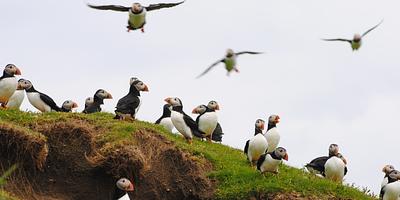
Protecting Seabirds from Invasive Predators
Blog by Sarah Lawrence Biosecurity for LIFE
The UK is home to an internationally important breeding seabird population, including 20% of the world’s razorbills, 55% of the world’s gannets, and an incredible 80% of the world’s Manx shearwaters. More than 5 million of these seabirds nest here in Scotland, and the vast majority are found on islands.
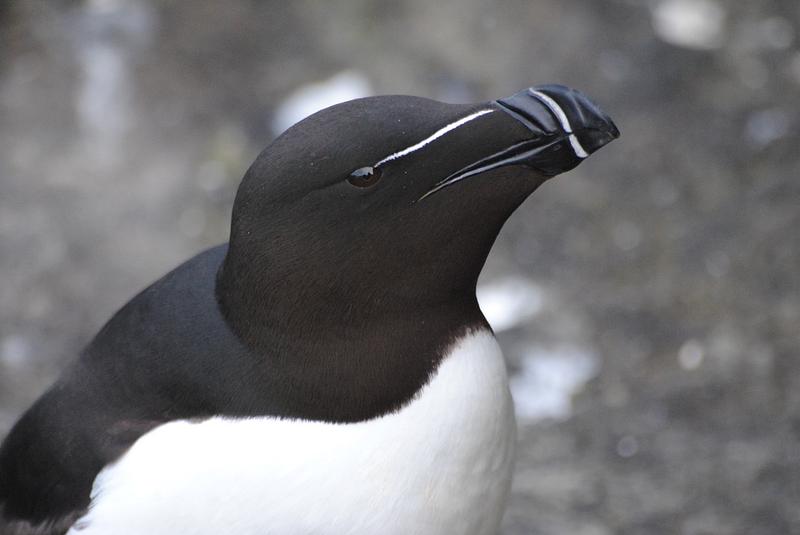
Seabirds are the fastest declining group of birds globally, with species like black-legged kittiwakes and Arctic skuas suffering from severe long-term declines. There are many reasons seabirds are suffering, but the top three threats they face are: invasive non-native species, bycatch in fisheries, and climate change.
“Invasive non-native species” are species that have been introduced into areas outside their natural range through human actions and are posing a threat to native wildlife.
Some of the invasive non-native species that pose a threat to Scotland’s seabirds are mammalian predators such as: rats, mice, stoats, American mink, feral cats, hedgehogs, and also plants like tree mallow. The marine environment that seabirds rely on is also at risk from species like slipper limpets and carpet sea squirt that can travel in ballast water or on the hulls of boats.
By nesting on islands, seabirds evolved away from the threat of ground-based predators. Instead they are adept at evading capture from above: puffins burrow underground away from hungry gulls, and fulmars regurgitate stomach oil that mats the feathers of other birds. But none of their defences are enough to stop invasive non-native predators like rats, stoats, or American mink from devastating seabird populations by eating their eggs and chicks.
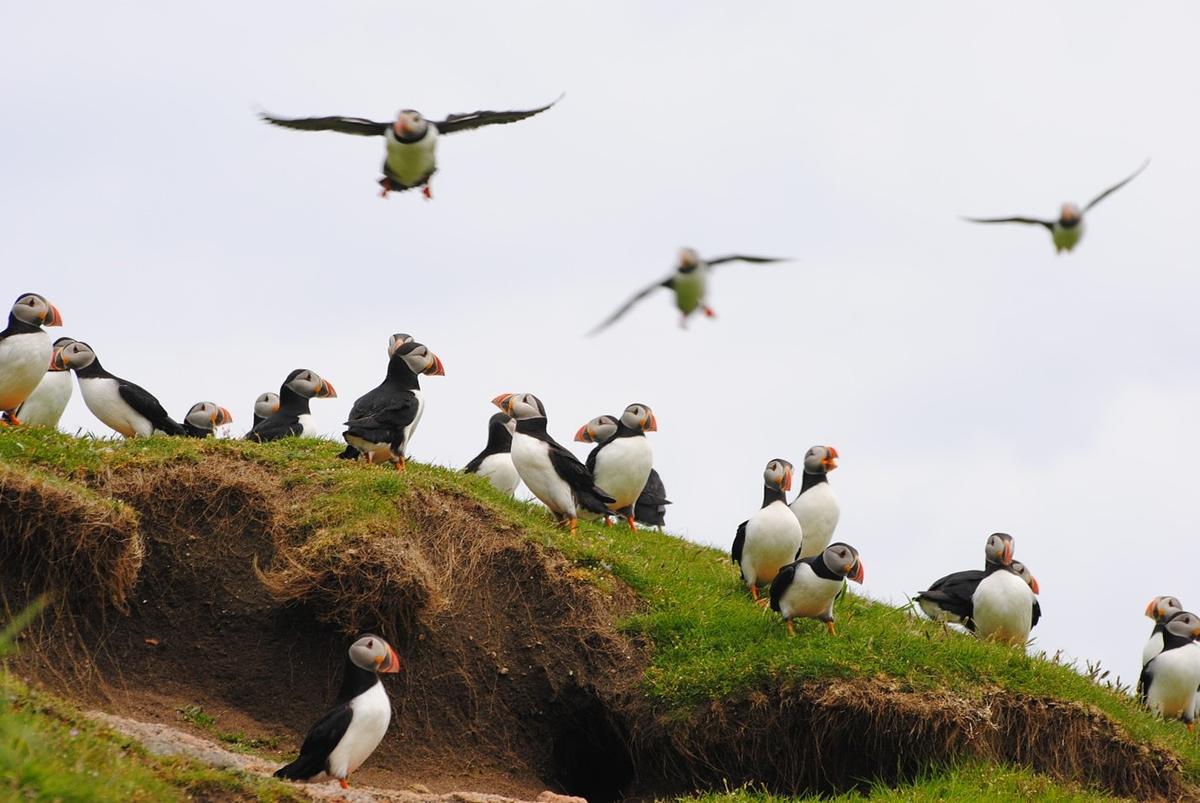
The idea of rats arriving on a remote island can seem like something from the history books, conjuring images of rats fleeing from old wooden ships – which of course, they did – and many seabird colonies have already suffered or been lost in this way. It’s easy to assume that shipwrecks and animals stowing away in cargo no longer happens, but the reality is different: since 2018 there have been at least eight shipwrecks, and three further cases of rat signs being found on UK seabird islands. It can be very difficult and expensive to remove even a single rat once it has arrived – and one pregnant female rat could lead to 300 rats within just eight months…
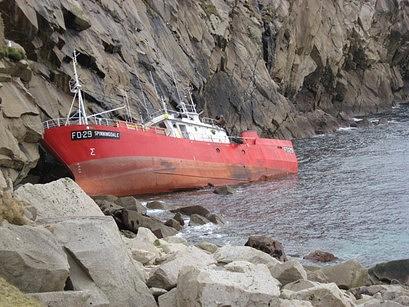
This is where biosecurity comes in. “Biosecurity” includes all the actions we take to prevent invasive non-native species from arriving on seabird islands in the first place. As with most things: prevention is better than cure!
The Biosecurity for LIFE project began in 2018 and is working on 42 seabird island Special Protection Areas around the UK to raise awareness of the threat of invasive predators on islands, and to put systems in place to prevent accidental introductions to these important places.
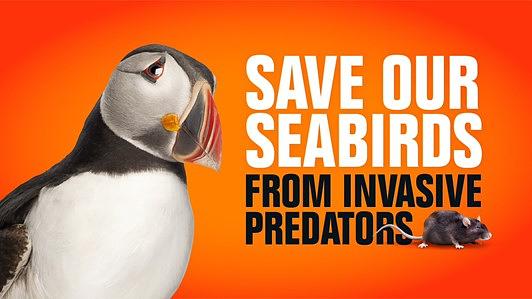
To ensure the islands remain free from invasive non-native predators, we’re helping to set up surveillance tools on each island, training a conservation detection dog to confirm any possible rat sightings, and setting up incursion response hubs containing all the equipment needed to get to an island quick enough to prevent an incursion (such as a single rat) turning into an invasion. Later this year we will start recruiting and training a network of volunteers ready to respond within 48-hours of an incursion.
But prevention is crucial– and absolutely everyone can play their part. Here are seven simple steps you can take when visiting any island:
1. Pack any food on the day you travel
2. Store food in rodent proof containers
3. Check your baggage for signs of stowaways before boarding the boat
4. Take your rubbish home
5. NEVER push a stowaway overboard – a rat can swim at least 2km!
6. If you find an invasive non-native predator on your boat, do not land on an offshore island
7. If you think you’ve seen signs of an invasive non-native predator on an island, report it to the island’s staff or owners
You can find more ways to get involved on our website www.biosecurityforlife.org.uk, including awareness raising materials, activity packs, and boat user information packs. Join us on Twitter @BiosecurityLIFE as we return to the islands this summer, and help us spread the word about island biosecurity.
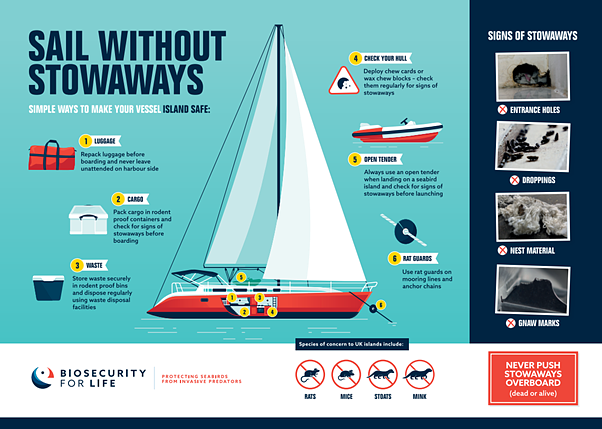
Biosecurity for LIFE is a partnership between RSPB, National Trust, and National Trust for Scotland, it is funded by EU LIFE Environmental Governance and Information [LIFE17 GIE/UK/000572], NatureScot, Natural England, Natural Resources Wales and the Northern Ireland Department for Agriculture, Environment and Rural Affairs

